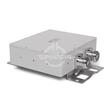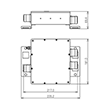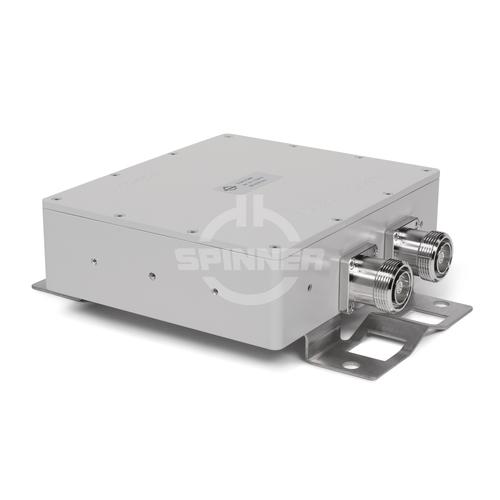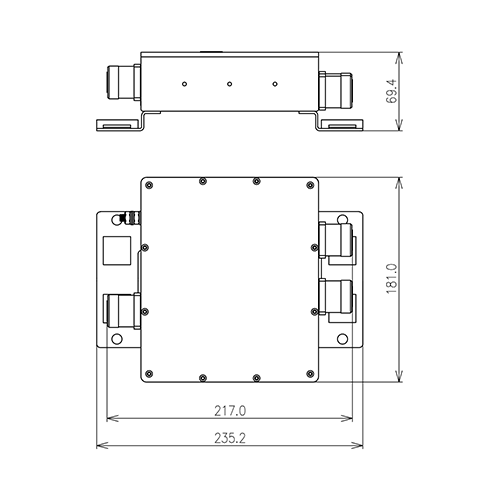SPINNER Combining Units for best radio frequency networks performance
Combining units are essential components in radio frequency networks, used to merge signals from multiple sources or split signals into multiple paths while maintaining signal integrity. All combiners work in bi-directional mode and can therefore be used to combine and split the transmitted and received signals.
The Multiband diplexer 1800/2100 MHz 7-16 female DC all guarantees excellent, lossless mobile communication quality for use in in-building distributed antenna systems (DAS) or on mobile communication base stations outdoors.
A multiband combiner is designed to combine signals from multiple frequency bands into a single output. This enables the effective use of antenna systems by reducing the number of antennas needed, which is crucial in dense network environments or where space is at a premium. Multiband combiners facilitate the operation of different frequency bands on a single feedline, optimizing both system efficiency and performance by simplifying infrastructure and minimizing hardware requirements.
They are typically used in:
- Co-Located Base Stations: In scenarios where multiple base stations are located close to each other (co-location), Multiband Combiners allow them to share a single antenna system.
- Distributed Antenna Systems (DAS): For in-building coverage or large indoor spaces, Multiband Combiners combine signals from various operators into a unified signal for distribution.
- Shared Infrastructure: Multiband Combiners enable cost-effective sharing of resources among different wireless service providers.
Critical characteristics are:
- Isolation: High isolation between input ports prevents interference between combined signals.
- Low Insertion Loss: Minimizing signal loss during combining ensures optimal network performance.
- Wide Bandwidth Coverage: Multiband Combiners should support a broad range of frequencies to accommodate various wireless technologies.
- Compact Design: Space efficiency is crucial, especially in indoor installations.
- Robust Construction: Outdoor versions must withstand environmental conditions (temperature, humidity).
Benefits are:
- Scalability: Multiband Combiners can adapt to changing network requirements without major modifications.
- Cost-Effectiveness: Shared infrastructure reduces costs for operators and building owners.
- Efficient spectrum utilization: by combining bands, multiband combiners optimize spectrum usage.
- Quick deployment: easy installation speeds up network rollout.
A diplexer is a device that separates or combines signals from two different frequency bands. These defined frequency bands can sometimes be quite wide, then we’re talking about ultra broadband devices. The diplexer allows these signals to share a common feeder line or antenna while maintaining isolation between them.
Outstanding RF characteristics, best possible passive intermodulation and VSWR
The Multiband diplexer 1800/2100 MHz 7-16 female DC all enables you to transmit high-frequency signals reliably and flawlessly with optimum protection of your sensitive equipment in a power range up to 250 W (per port) with maximum passive intermodulation (IM3) of -155 dBc.
The protection class is IP 65.
The port path designation regarding main line and probe is as follows: Port 1, 2: input, Port 3: output
It supports the use of the following frequency bands : 1800, 2100
The 7-16 connector has become the most widely used coaxial connection system for mobile communication systems, due to its excellent mechanical and electrical properties. In order to achieve the industry leading intermodulation performance SPINNER applies silver-plating on all inner and outer conductor parts of the standard connector. As a supporting measure, we use exclusively non-magnetic materials, and we have minimized the number of RF contact points. The connection is especially suited for transmitting medium or high power indoors and outdoors.



